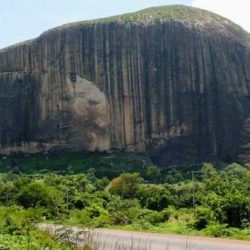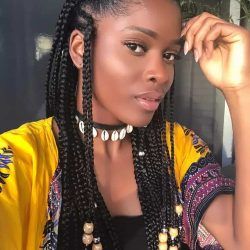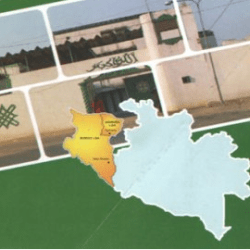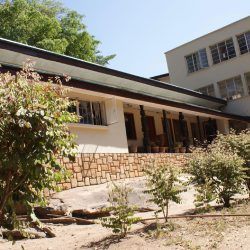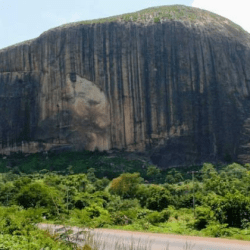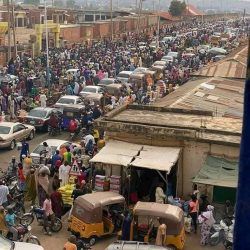Ideal cultural and tourism destinations in Niger, the Power State of Nigeria, are:

- Baro Empire Hill
- Baro Port
- A Bee Tree
- Masaga Glass Works
- Brass Works Tswata- Mukun
- Kainji Lake National Park
- Pissa Cave
- Kisra Museum
- Kainji Hydro-Electric Dam Complex
- Awaru Rapid Falls
- National Institute For Fresh Water Fisheries Research
- Federal College Of Wild Life Management
- Bosso Hill
- Zarumai’s Grave
- Bosso Dam
- Pati-Woli (Mountain)
- Essan Old Kingdom Ruins
- Gurara Water Falls
- Binna Foot Print
- Dabo Mosque
- Dauda Maza Weaponry
- Capt G.F. Tabman’s Grave
- Dagina Games Reserve
- Local Dyeing Centre
- Kutigi Weaving Center
- Nagwamatse Well
- Nagwamatse Tomb
- Makwalla Dyeing Centre
- Like O. Mystic River
- Tsoede Tomb
- Gwagwade Moving Rock
- Ibbi National Park
- Wushishi Engine Tramway No.1
- State Museum
- Growing Pot
- Mungo Park Cenotaph
- Manko Tomb
- Crocodile Pond
- Hwa-Hwa Stream
- Tatiko Cottage Industry
- River Chimbi
- Dusten Mai Nono
- Kusherki Magnetic Hill
- Gidan Abubakar Imam
- Arts and Craft Centre
- War Bee
- Rataya Giwa Mountain
- Sanjir Mountain
- Shiroro Hydro-Electric Dam and Lake
- Regge Hill
- Zuma Rock
- Ladi Kwali Pottery Centre
- Lord Lugard Colonial Ruins
- Nnamdi Azikwe Centre
- Zugurma National Park
| NAME OF ATTRACTION | LOCATION | LGA |
| Baro empire hill | Baro | Agaie |
| Baro port | ||
| a bee tree | Agwara | Agwara |
| Masaga glass works | Bida | Bida |
| Brass works tswata- mukun | Bida | |
| Kainji lake national park | New – bussa/ibbi | Borgu |
| Pissa cave | Pissa | |
| Kisra museum | New – bussa | |
| Kainji hydro-electric dam complex | Kainji | |
| Awaru rapid falls | Awuru | |
| National institute for fresh water fisheries research | New-bussa | |
| Federal college of wild life management | ||
| New-bussa | ||
| Bosso hill | Bosso | Bosso |
| Zarumai’s grave | Bosso | |
| Bosso dam | Bosso | |
| Pati-woli (mountain) | Lemu | Gbako |
| Essan old kingdom ruins | Essan | |
| Gurara water falls | Bonu village | Gurara |
| Binna foot print | Binna | Lapai |
| Dabo mosque | Gulu | |
| Dauda maza weaponry | Lapai | |
| Capt G.F. tabman’s grave | Gulu | |
| Dagina games reserve | Dagina | Lavun |
| Local dyeing centre | Kutigi | |
| Kutigi weaving center | Kutigi | |
| Nagwamatse well | Nagwamatse (along tegiina-kontagora) | Mariga |
| Nagwamatse tomb | Mamba | Magama |
| Makwalla dyeing centre | Auna | |
| Like o. mystic river | Salka | |
| Tsoede tomb | Gwagwade | |
| Gwagwade moving rock | Gwagwade | |
| Ibbi national park | Ibbi | Mashegu |
| Wushishi Engine Tramway No.1 | Minna | Minna |
| State museum | Minna | |
| Growing pot | Gbara | Mokwa |
| Mungo park cenotaph | Jebba north | |
| Manko tomb | Rabba | |
| Crocodile pond | Mokwa | |
| Hwa-hwa stream | Ezhi | |
| Tatiko cottage industry | Tatiko | Paikoro |
| River chimbi | Chimbi | |
| Dusten mai nono | Kagara | Rafi |
| Kusherki magnetic hill | Kusherki | |
| Gidan Abubakar Imam | Kagara | |
| Arts and craft centre | Uregi | |
| War bee | Pangu | |
| Rataya giwa mountain | Rijau | Rijau |
| Sanjir mountain | Rijau | |
| Shiroro hydro-electric dam and lake | Zumba(shiroro) | Shiororo |
| Regge hill | Bassa | |
| Zuma rock | Suleja | Suleja |
| Ladi kwali pottery centre | Suleja | |
| Lord lugard colonial ruins | Zungeru | Wushishi |
| Nnamdi Azikwe centre | Zungeru | |
| Zugurma national park | Zugurma | Mashegu |
Niger
Niger is a State located in central Nigeria and its capital city is Minna.
Other top cities in Niger State include Bida, Suleja and Kontagora.
The State has an expansive land area and it’s close to the nation’s capital, Abuja.

Creation: It was created out of the defunct North Western state on 3rd February, 1976.
Location: Situated in the North central geo-political zone.
Administrative areas: The State comprises 25 Local Government Areas grouped into 3 administrative zones: A, B, C with each zone having 8, 9 and 8 Local Government Areas (LGAs) respectively.
List of Local Government Areas
Niger State has 25 Local Government Areas, namely:
- Agaie
- Agwara
- Bida
- Borgu
- Bosso
- Chanchaga
- Edati
- Gbako
- Gurara
- Katcha
- Kontagora
- Lapai
- Lavun
- Magama
- Mariga
- Mashegu
- Mokwa
- Munya
- Paikoro
- Rafi
- Rijau
- Shiroro
- Suleja
- Tafa
- Wushishi
Local Government Areas and their headquarters
The Local Government Areas in Niger State and their headquarters are:
| SN | LGA | HEADQUARTERS |
| 01 | Agaie | Agaie |
| 02 | Agwara | Agwara |
| 03 | Bida | Bida |
| 04 | Borgu | New Bussa |
| 05 | Bosso | Maikunkele |
| 06 | Edati | Enagi |
| 07 | Gurara | Gawu Babangida |
| 08 | Gbako | Lemu |
| 09 | Katcha | Katcha |
| 10 | Kontagora | Kontagora |
| 11 | Lapai | Lapai |
| 12 | Lavun | Kutigi |
| 13 | Mariga | Bangi |
| 14 | Mokwa | Mokwa |
| 15 | Magama | Nasko |
| 16 | Mashegu | Mashegu |
| 17 | Munya | Sarkin Pawa |
| 18 | Paikoro | Paiko |
| 19 | Rafi | Kagara |
| 20 | Rijau | Rijau |
| 21 | Shiroro | Kuta |
| 22 | Suleja | Suleja |
| 23 | Tafa | Sabon-Wuse |
| 24 | Wushishi | Wushishi |
| 25 | Minna | Minna |
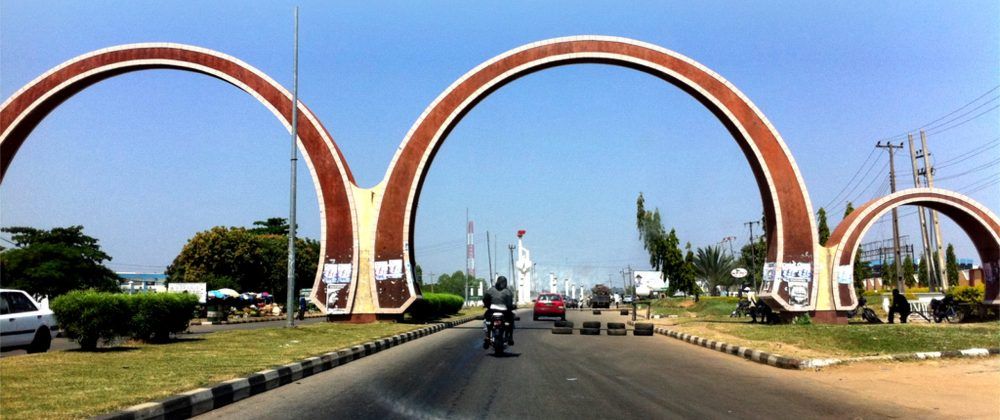
Boundaries: Niger State shares its borders with republic of Benin (West), Zamfara State (North), Kebbi (North-West), Kogi (South), Kwara (South West), Kaduna (North-East) and the FCT (South-East).
Land area, the largest among Nigerian states: Niger State is one of the largest states in Nigeria covering about 86,000km2 (or about 8.6million hectares) representing about 9.3% of the total land area of the country.
Major rivers: Niger State’s major rivers are: Niger, Kaduna, Gbako, Eko, Gurara, Ebba, Ega, Mariga and their tributaries.

Fishes: The common fishes found in these rivers are: Nile Perch (Lates) Trunck fish, Cat fish, Osteoglosid, Tilapia, Synodontis, Tiger fish, Moon fish, Mormyrid and Electric fish. By the 2006 census, the State’s population is 3,950,249 comprising 2,032,725 males and 1,917,524 females.

Ethnic groups: The easily identifiable major ethnic groups are Nupes, Hausa, Gbagyi, Kadara, Koro, Bassa, Kamuku, Ingwai, Fangu, Kambari, Dukkawa, Fulani, Abewa, Bisan, Gungawa, Bauchi, Bariba, Urah, Boko, Bokobaro, Bauchnu, Achifawa, Dakarkari, Kakanda, Ganagana, and Dibo and numerous non native tribes.
Economic activities: The major economic activity is agriculture: farming, fishing, and cattle rearing.
The other economic activities (though limited in scale) include banking, trading, transportation, local arts and crafts with Bida, the heart land of the Nupes, famous for its brass work. These activities constitute the means of livelihood of the people of Niger State in addition to public service.
Reference: nigerstate.gov.ng/about-niger
